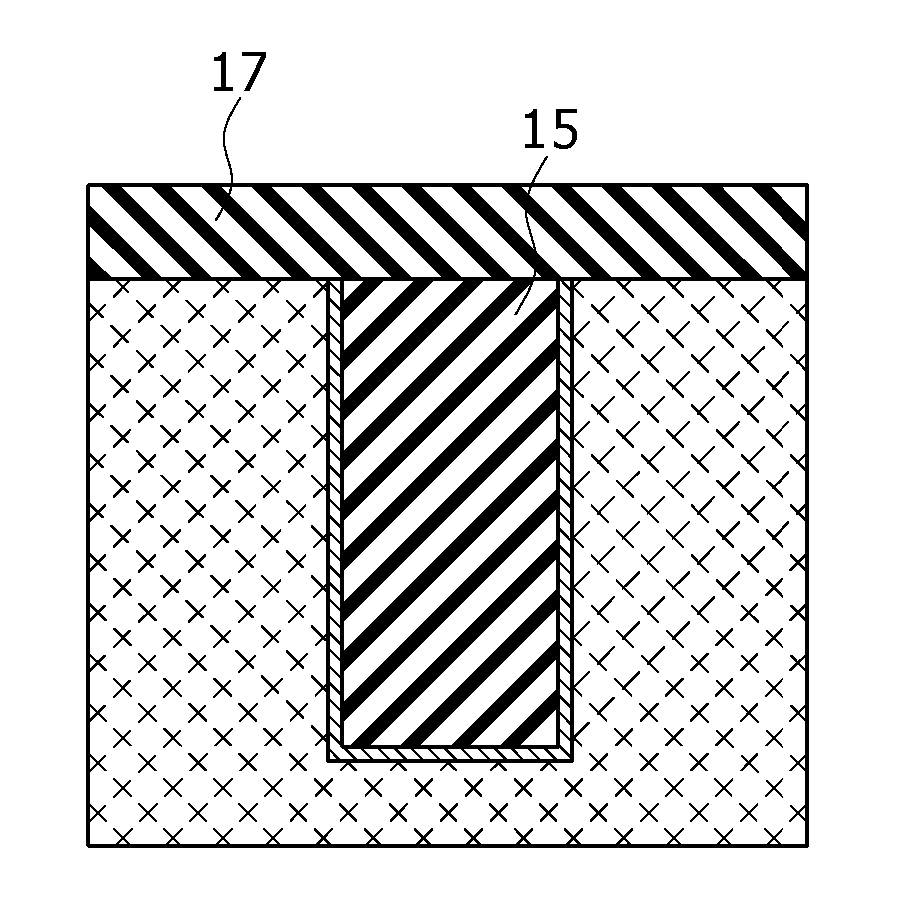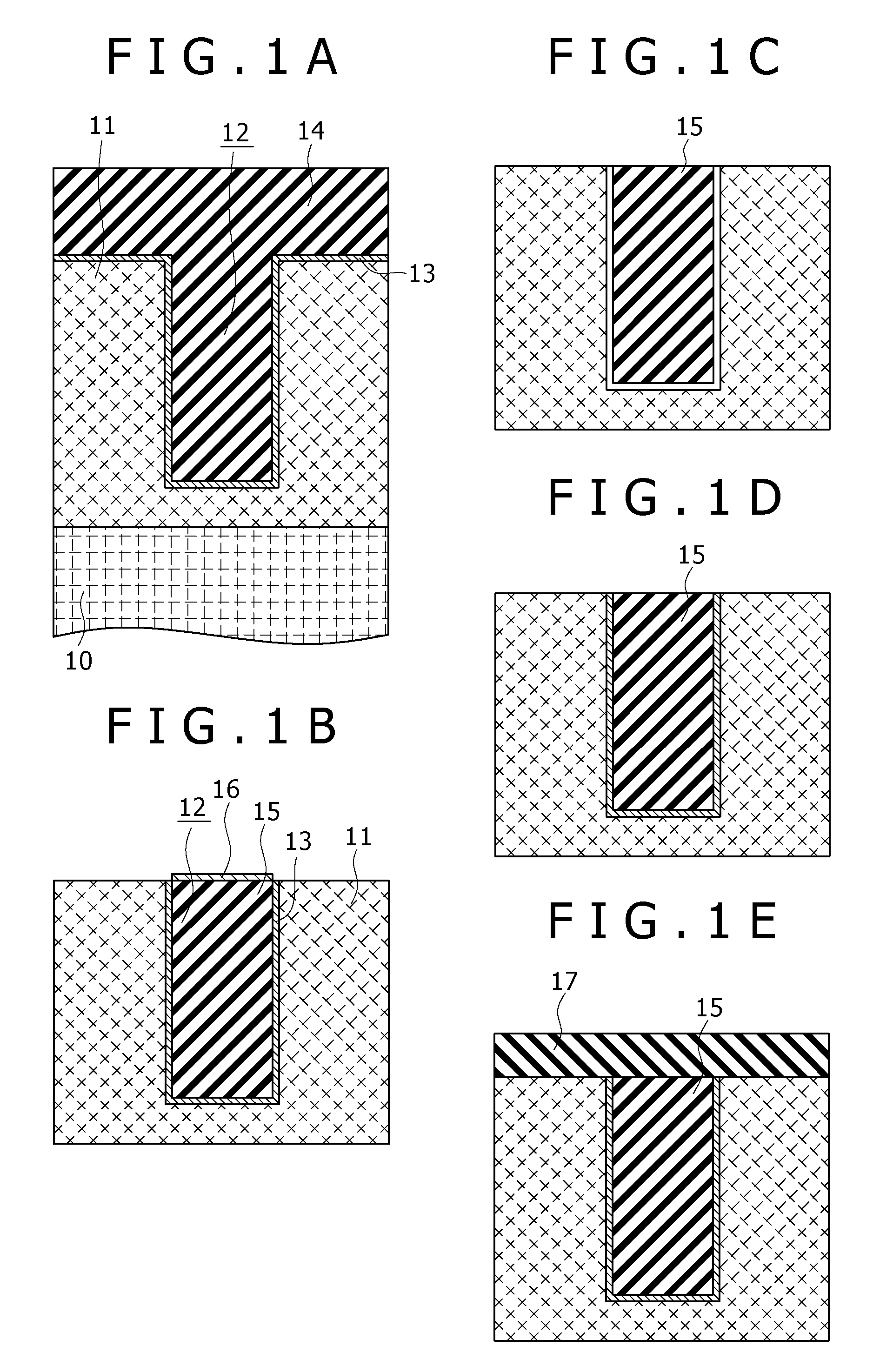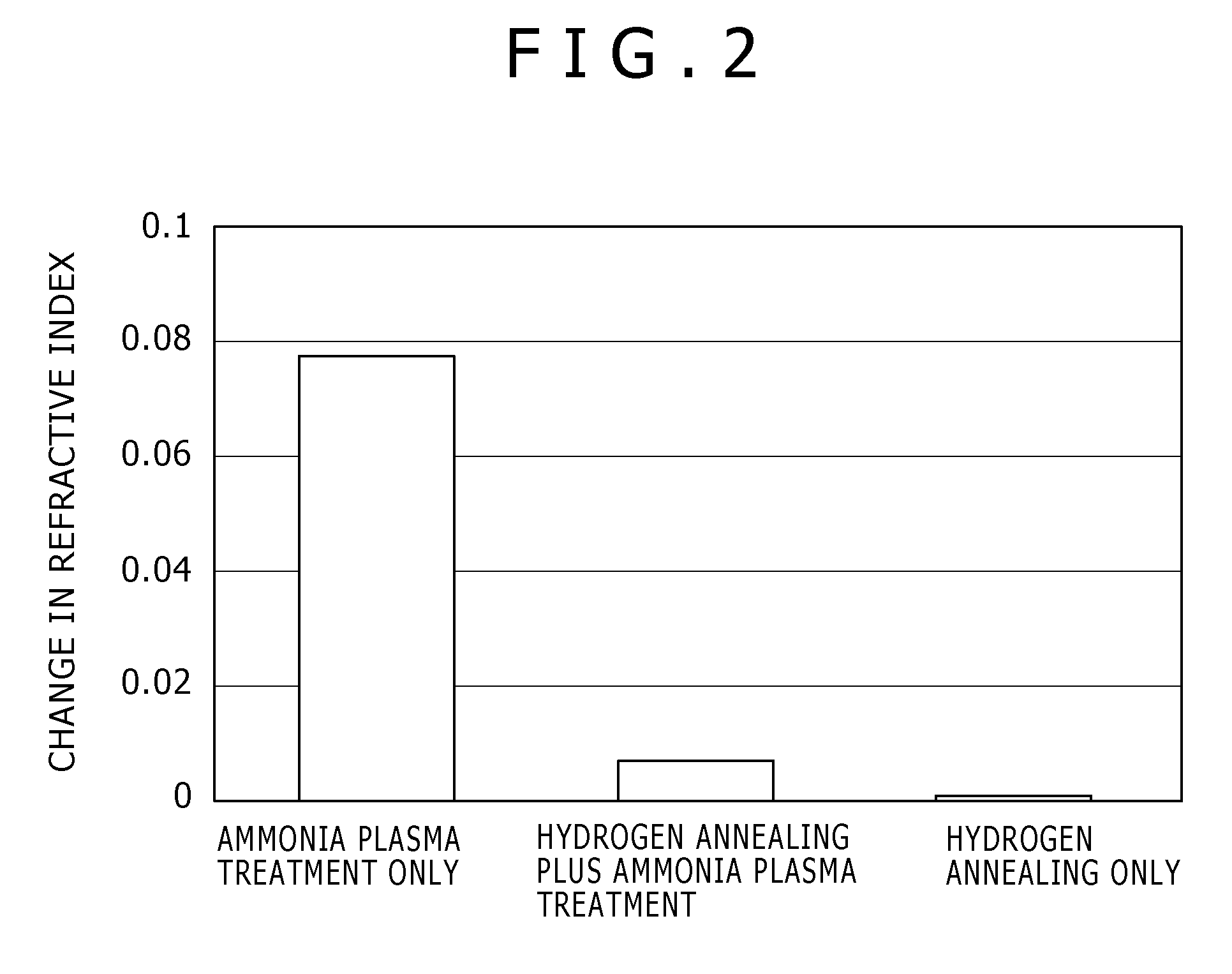Method for production of semiconductor devices
a technology of semiconductor devices and production methods, applied in semiconductor/solid-state device manufacturing, basic electric elements, electric devices, etc., can solve the problem of extremely thin native oxide remaining after heat treatment, and achieve the effect of reducing gas, shortening time, and minimizing disadvantages
- Summary
- Abstract
- Description
- Claims
- Application Information
AI Technical Summary
Benefits of technology
Problems solved by technology
Method used
Image
Examples
Embodiment Construction
[0017]The method of the present invention is designed to remove native oxide from the surface of the conductive layer formed on a low-dielectric insulating layer by heat treatment with a hydrogen-based reducing gas and plasma treatment with a reducing gas which are performed successively. The combination of the two steps prevents the insulating film from increasing in dielectric constant and receding (detrimental to uniform electric properties and reliability) which would occur if the latter plasma treatment is performed alone.
[0018]The method for production of semiconductor devices according to an embodiment of the present invention will be described with reference to one embodiment shown in FIG. 1, which is a schematic diagram not drawn to scale.
[0019]In FIG. 1A, there is shown a substrate 10, which is omitted in subsequent figures. First, a groove 12 for wiring is formed in an interlayer insulating film 11 on the substrate 10. The interlayer insulating film 11 may be a low-dielec...
PUM
| Property | Measurement | Unit |
|---|---|---|
| dielectric constant | aaaaa | aaaaa |
| thickness | aaaaa | aaaaa |
| thickness | aaaaa | aaaaa |
Abstract
Description
Claims
Application Information
 Login to View More
Login to View More - R&D
- Intellectual Property
- Life Sciences
- Materials
- Tech Scout
- Unparalleled Data Quality
- Higher Quality Content
- 60% Fewer Hallucinations
Browse by: Latest US Patents, China's latest patents, Technical Efficacy Thesaurus, Application Domain, Technology Topic, Popular Technical Reports.
© 2025 PatSnap. All rights reserved.Legal|Privacy policy|Modern Slavery Act Transparency Statement|Sitemap|About US| Contact US: help@patsnap.com



